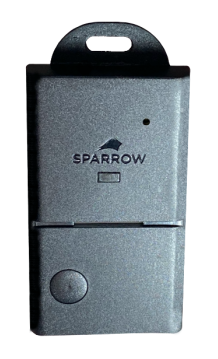My colleague and I visited a mid-sized poultry plant to test the Peracetic Acid (PAA) vapor levels in the air, as requested by the plant’s safety manager due to complaints from workers and interest in using our PAA monitor to help ensure workers are safe. PAA is an extremely effective and necessary biocide used to make sure the food we eat is safe by killing the microorganisms on the meat. The safety manager was unaware that there is a product that can measure only PAA vapors (not Hydrogen Peroxide or Acetic Acid) throughout the plant, and wanted to see real-time what the workers were being exposed to.
We took our SafeCide™ PAA monitor and headed into the plant. ACGIH recommends not exceeding 0.40ppm levels in the air for 15 minutes, and NIOSH has proposed an Immediately Dangerous to Life and Health (IDLH) level for PAA of 0.64ppm (this is currently under review). The air in many different areas of the plant had levels higher than this (up to 0.91ppm in some areas, as shown in Figure 1). Whether a worker experiences symptoms or not, there is no way to know what they are being exposed to without monitoring.
Figure 1: Real-time PAA measurements in the plant during visit, removing leak from tote

Our guide wanted to simulate a leak of PAA vapor from a tote to see what the exposure would be for workers in this scenario. The SafeCide™ PAA monitor is only calibrated to show a maximum concentration of 3.0ppm accurately, because any exposure above this is unsafe. The leak from the tote showed readings above 30ppm (as shown in Figure 2), which immediately caused my colleague and me to experience symptoms of exposure (coughing, burning eyes and throat). The symptoms persisted for several days after exposure.
Figure 2: Real-time PAA measurements in the plant during visit

If you experience symptoms of exposure to PAA, make sure to tell your employer you are having symptoms so corrective action can take place. PAA is a very effective biocide that leaves behind no residue, but inhalation can cause severe health effects at high levels.
If you can measure PAA vapor concentration, you can control it and use it safely.
Measuring the levels of PAA vapor in the air with SafeCide will let you know when and where workers are exposed to unsafe levels and give you the knowledge you need to take corrective action. There may be a need to increase or repair ventilation, wear additional PPE, or avoid high exposure areas by taking an alternative route. Give your employees peace of mind they are safe, and start monitoring today.
Source: chemdaq.com/blog

